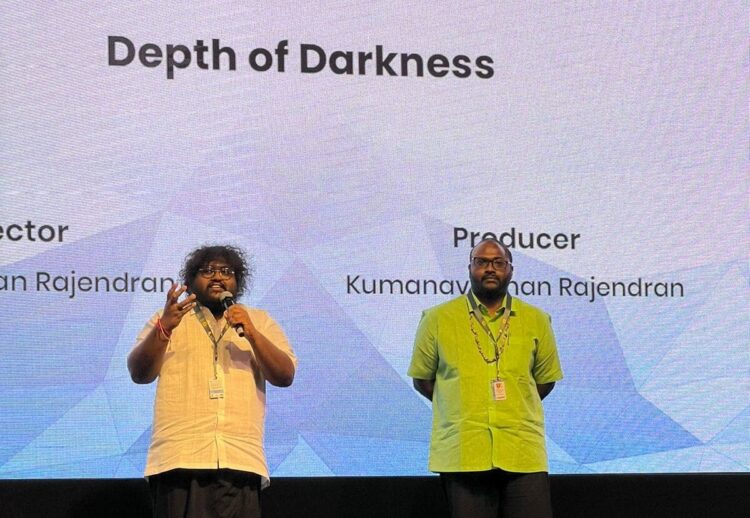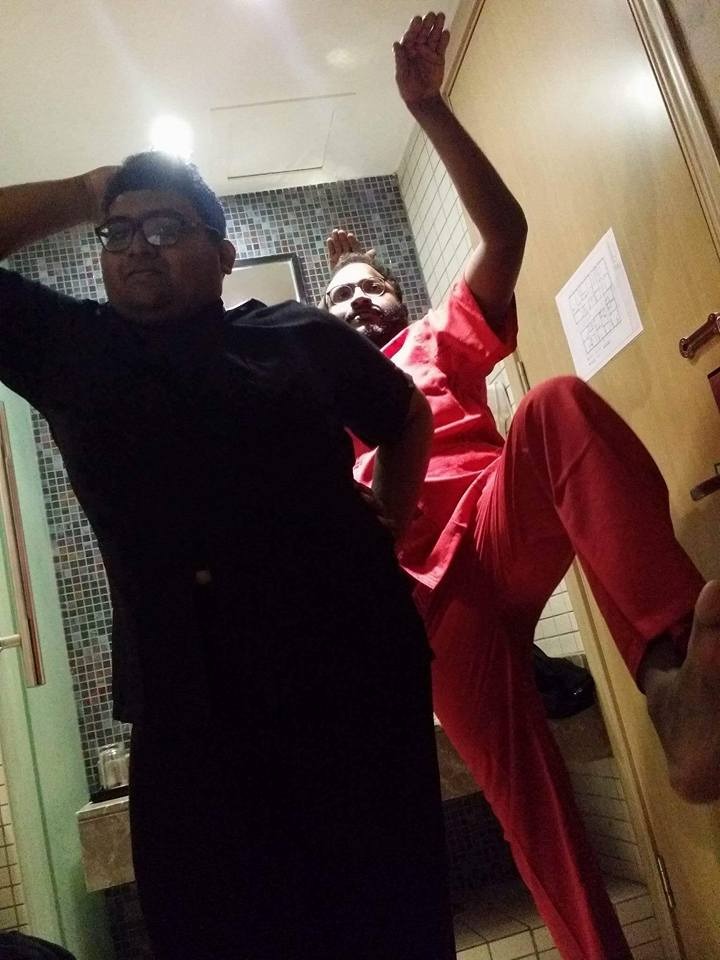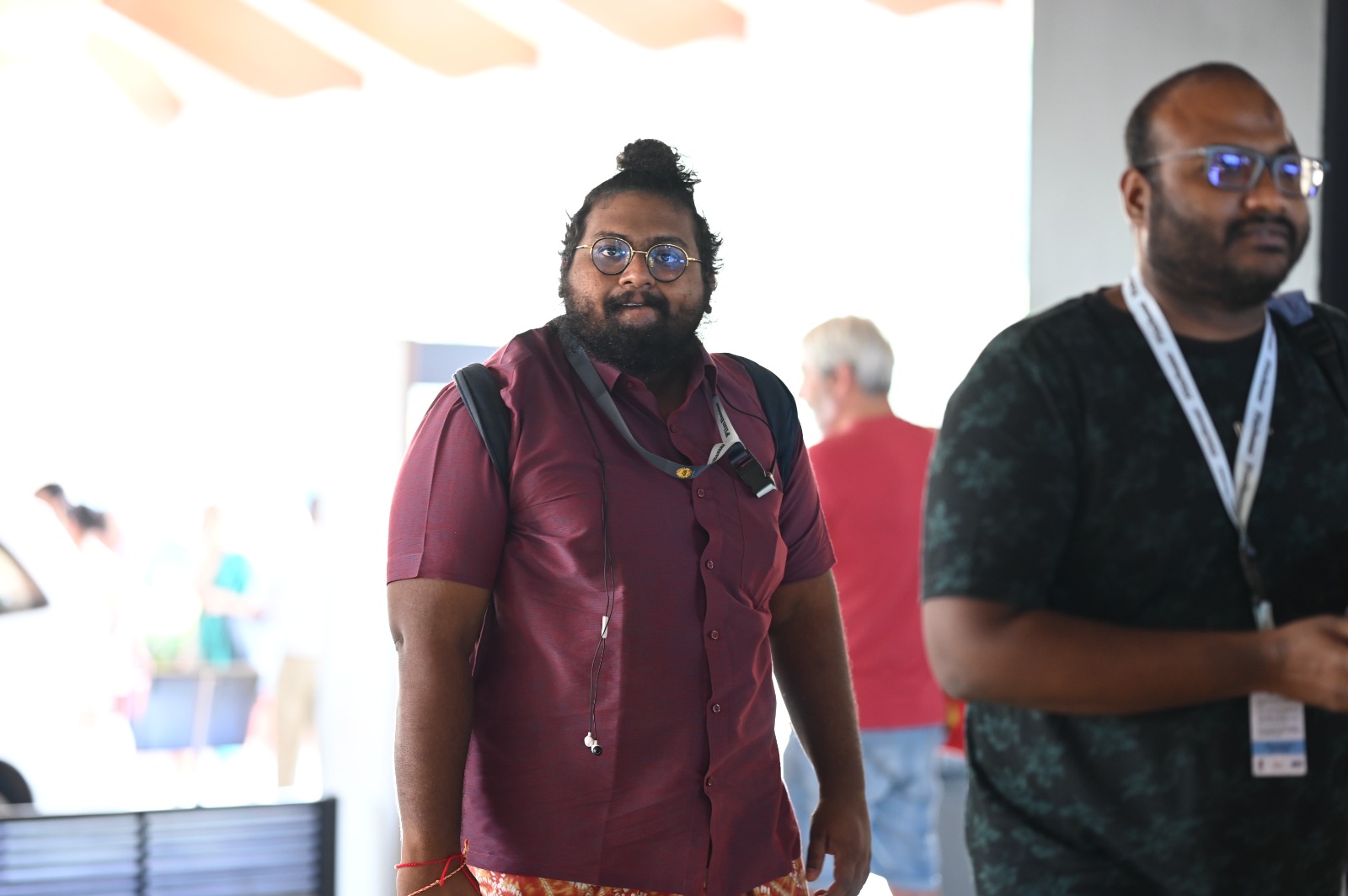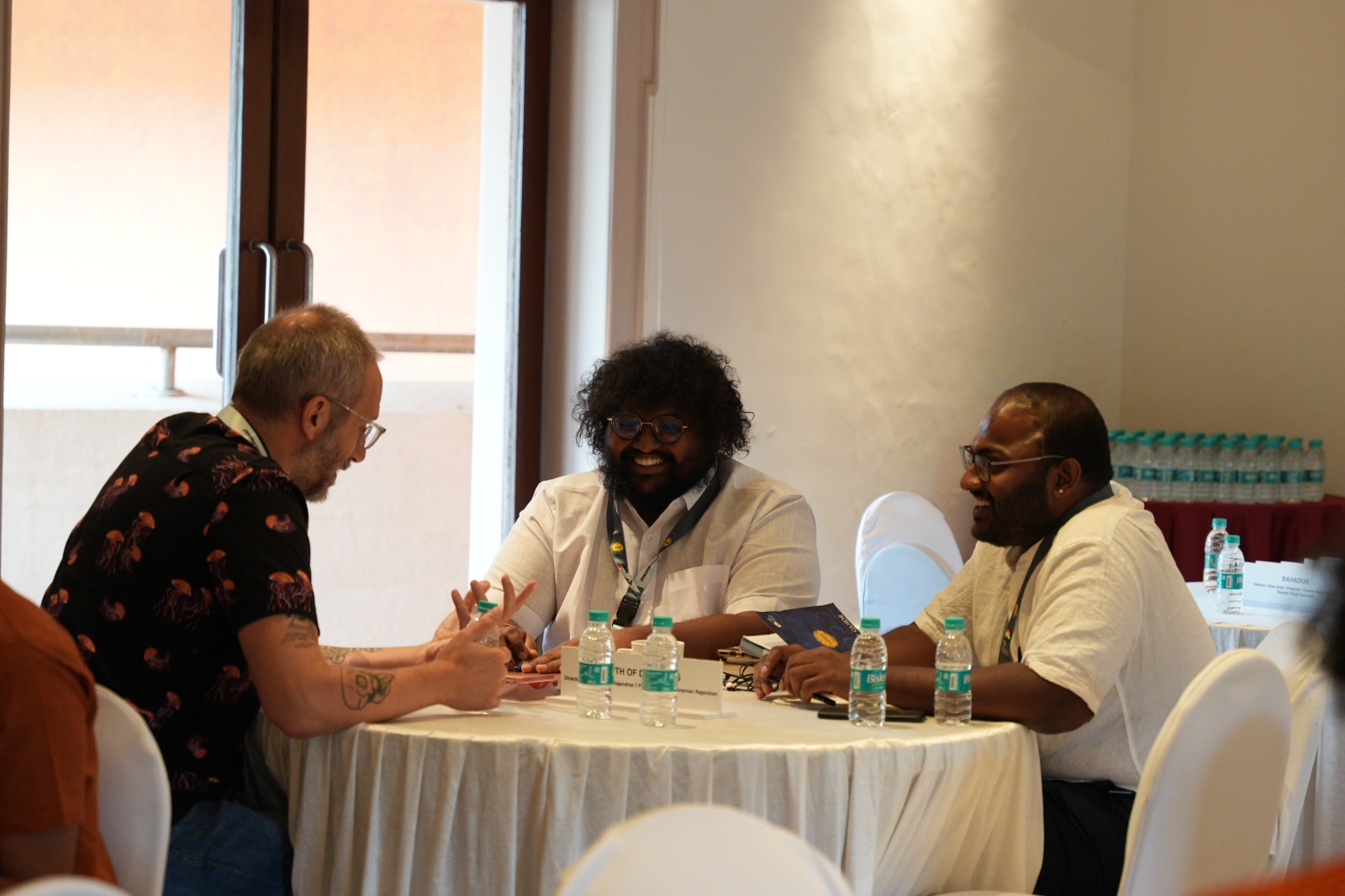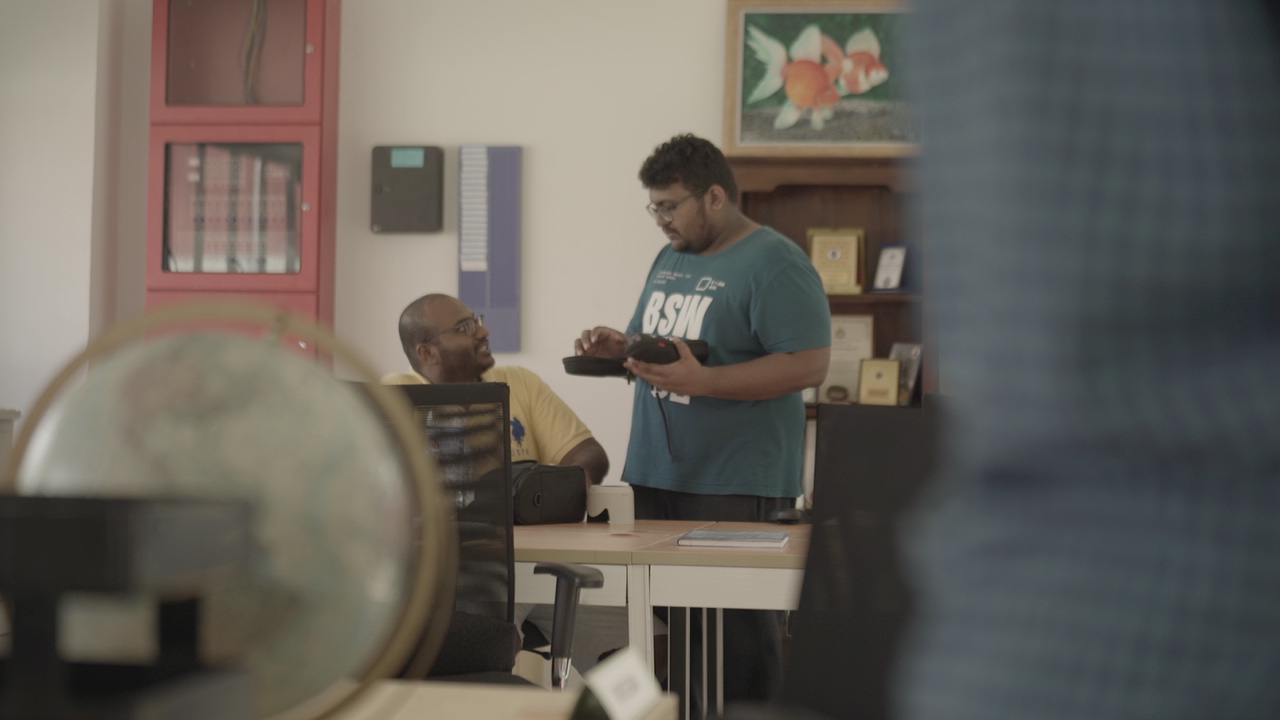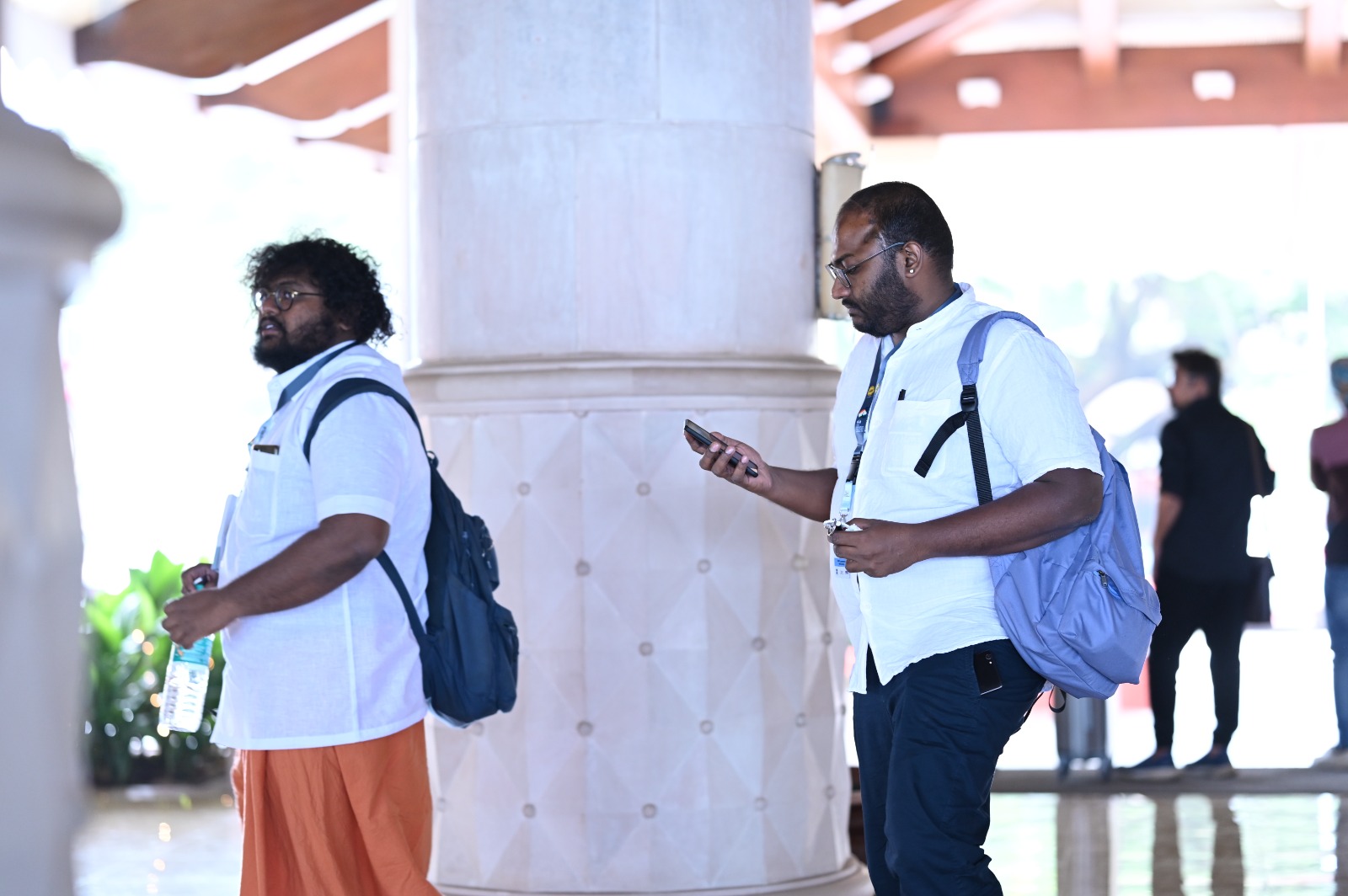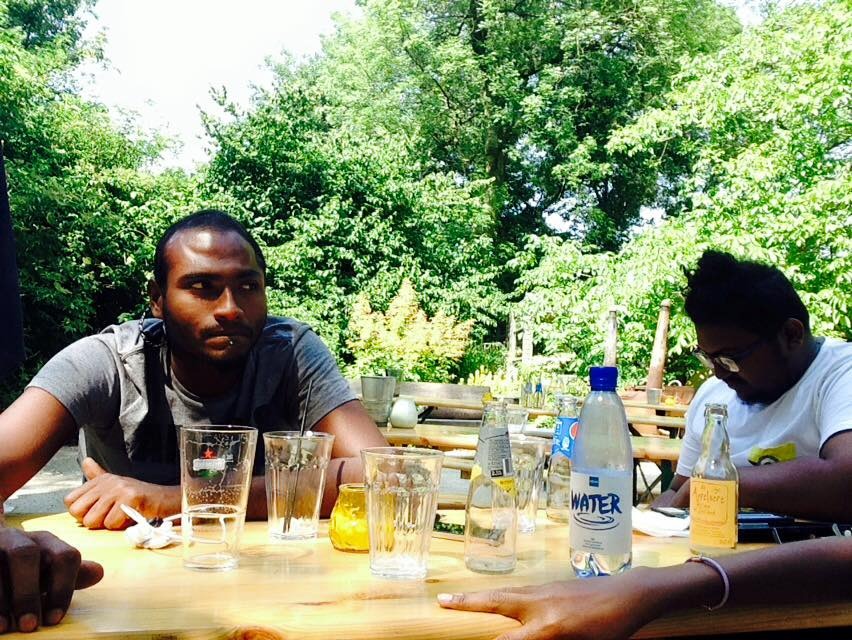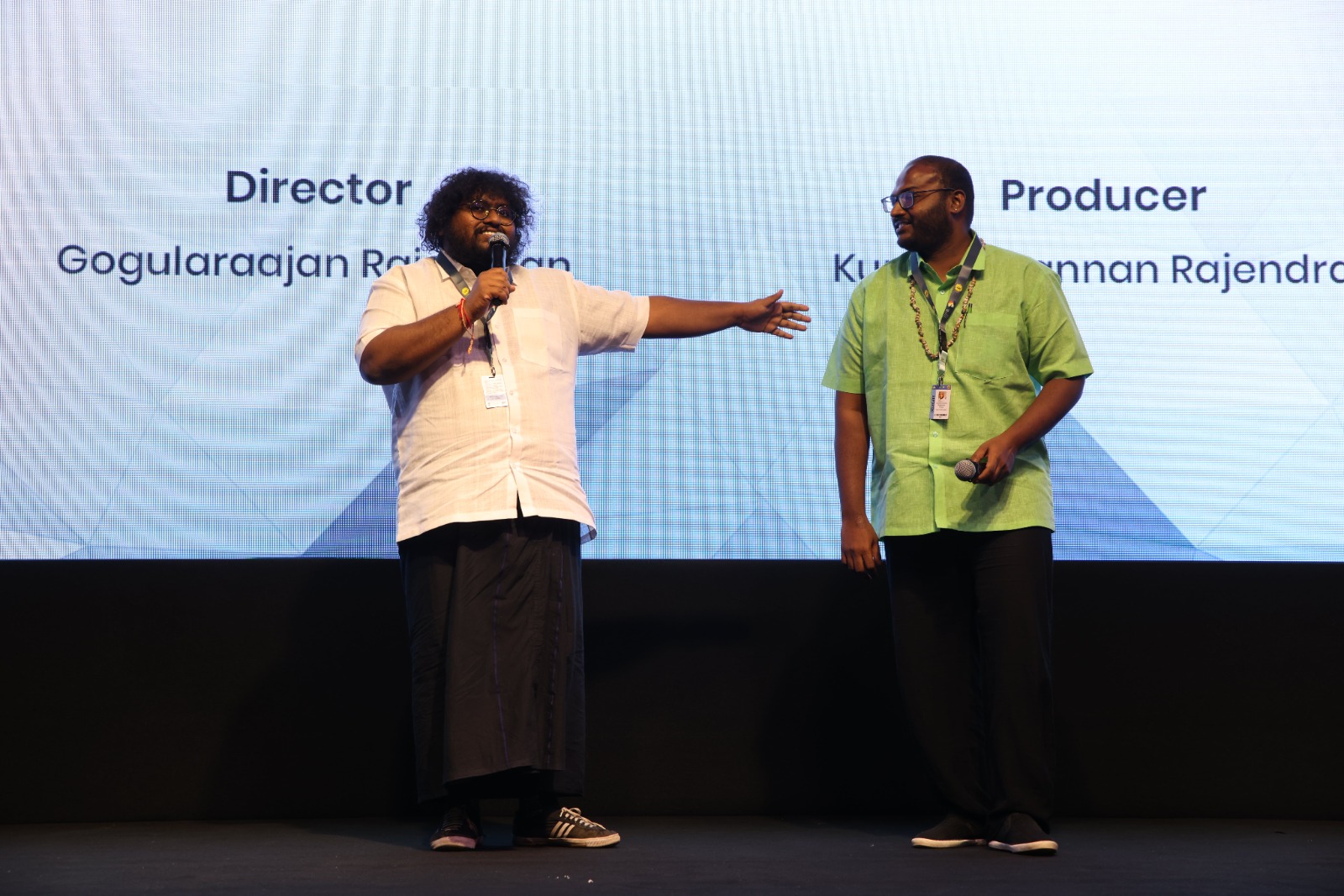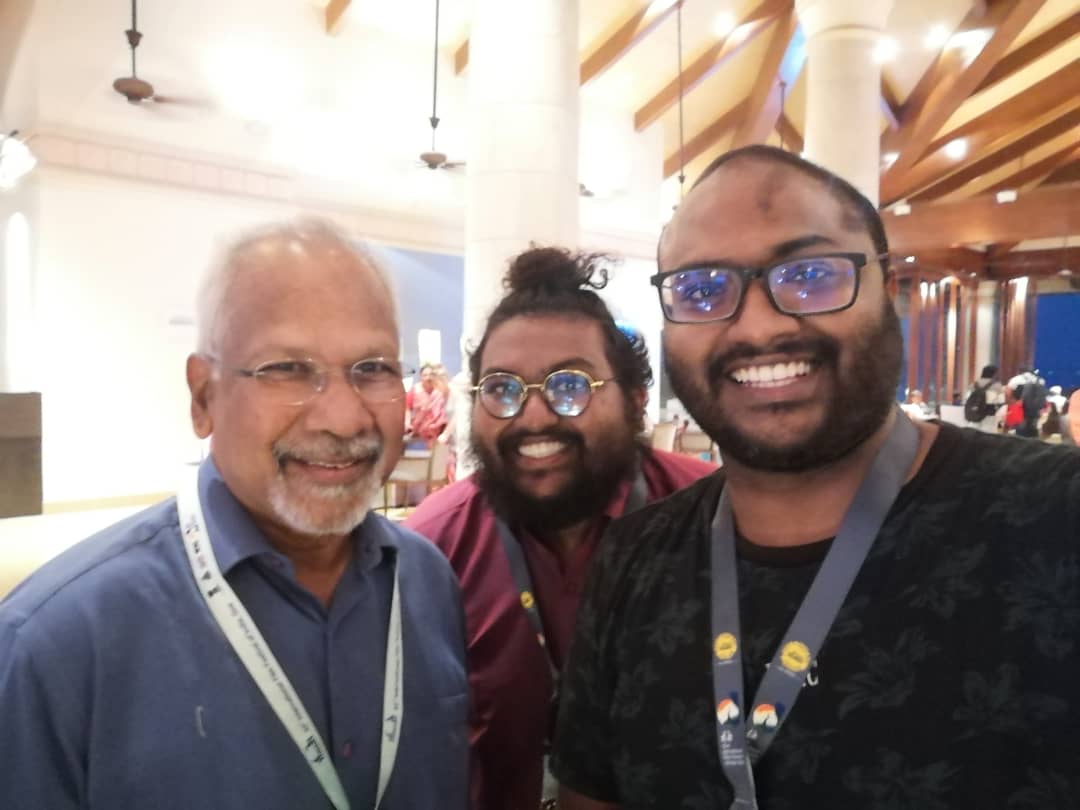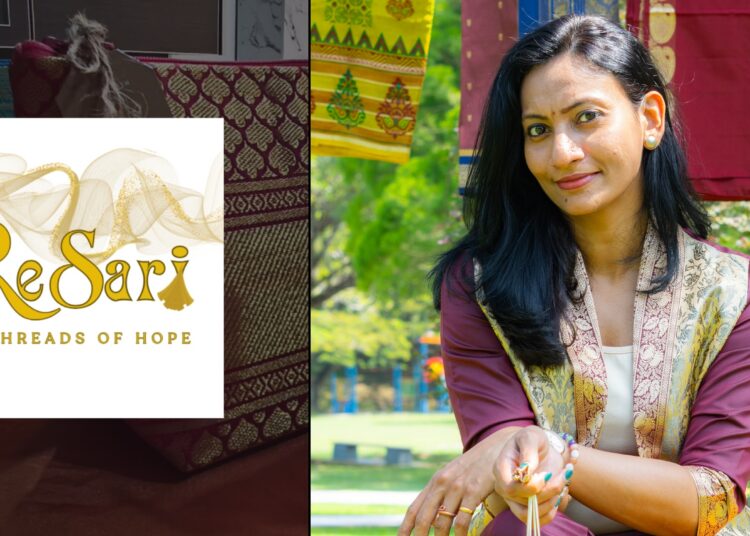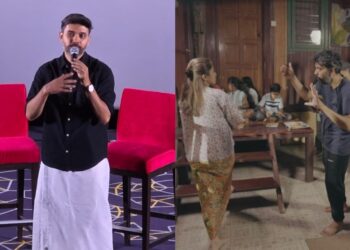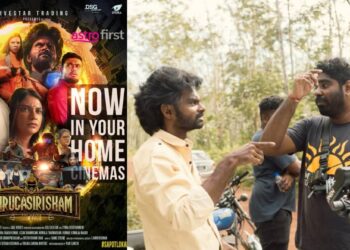Filmmaker Gogularaajan Rajendran and Producer Kumanavannan Rajendran are brothers who creatively collaborate in creating some of the most thought-provoking, emotionally intellectual, and honest depictions of Tamil life in Malaysia. But we can go further to emphasise that their work is not only a reflection of Tamil life and history in Malaysia but also one that captures the complex and dialectical nature of Malaysia as a nation trying to realise its own sentience. From their comedic and socially conscious YouTube videos on NaaraSimma TV to their feature film Kaali: The Depth of Darkness, and their documentary film Plantation Life: As It Was, Gogu and Kuma are two individuals that undeniably contribute to a new and vital cinematic and cultural expressions of Tamils in Malaysia. Here is a brief glimpse into their perspectives on art, cinema, and the world.
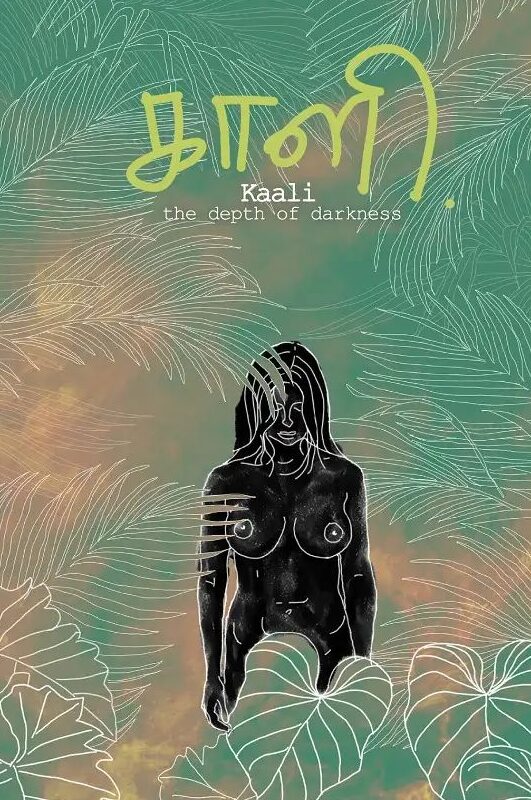
On your Youtube channel, NaaraSimma TV, you have many intriguing works, from comedic satires like HR RAAGA (aaha sirantha imsai) to more outwardly serious works like the short film Virus Mairus, along with travel vlogs and videos of you expressing your views. How do you see your YouTube channel? How has the platform helped you in your creative transformation as a filmmaker?
Gogu: Naarasimma began right after my SPM examinations. While awaiting the results and planning for further studies, my classmates, my brother, and I decided to explore our filmmaking skills through this platform. Initially, we launched the channel with a sense of urgency – it was a platform to critique and vent our frustrations and disappointments regarding our Indian community.
During that time, we noticed a growing self-censorship movement within our community, driven by concerns about portraying Indians in a negative light. While we understood the motivation behind this (to reduce stereotypes about Indians as criminals and as a lower community in Malaysia compared to other races), we believed it was essential to confront our own darkness and imperfections, rather than shy away from them. We viewed artists as akin to doctors who diagnose diseases and problems, and present them plainly to the patient. Only by acknowledging the existence of an issue can true healing and treatment begin.
However, over time, this platform led me to a deeper understanding of the art of filmmaking. I began to grasp the significance of well-developed characters, the importance of mise en scène, and the underlying intentions within a narrative. I realized that films have the power to do more than just criticize or provoke; they can lead us to healing if handled with sensitivity.
As a result, my creative ideas and expressions began to yearn for a canvas larger than YouTube videos, eventually guiding me toward the world of cinema.
Could you share the history and ideas behind the Padai Film Community? And the significance of film communities for the nurturing of future generations of Tamil and non-Tamil filmmakers in Malaysia?
Gogu: In 2017, I volunteered at the first SeaShorts Film Festival. There, I had the opportunity to witness numerous short films from all over Southeast Asia and listen to filmmakers during the Q&A sessions after the screenings. Although I was rather shy at the time and didn’t engage in many conversations, I was incredibly inspired by merely being in the presence of people who shared a deep love for cinema. The power of a collective passion was undeniably strong.
Fortunately, Mr. Shanjey was also in attendance as a Panel Jury member. Although we had briefly known each other before, it was during this event that we forged a strong bond. We both recognized the positive impact of the experience and the lack of active participation from the Indian community in this uplifting environment. We shared a common desire to build a strong community within our own circles and then integrate these individuals into the larger community of indie filmmakers in Malaysia. Our core goal was to create a connected network within Tamil indie filmmakers and to bring the fine art of cinema to the masses, fully aware that this would be a challenging and lengthy journey.
Subsequently, we began organizing gatherings among a few promising Tamil filmmakers, where we discussed various topics and hosted screenings and talks. We were fortunate to receive generous venue sponsorship from GMBB Mall, which greatly supported our efforts. Everything was going smoothly until the arrival of the COVID-19 pandemic.
Our broader mission is to connect with the younger minds in our community, especially those still in school, and introduce them to world cinema, expanding their cinematic horizons. As filmmakers, we believe we have a responsibility to cultivate audiences and foster their appreciation for a wider range of cinema in any way we can. I hope we can resume the journey of Padai, after finishing some urgent filmmaking responsibilities we are having now.
You’ve mentioned that Shanjhey Kumar Perumal’s Jagat has been influential in aiding you to perceive a new film culture for Malaysian Tamils. He has collaborated with you on writing for the short film Virus Mairus, and you are also the assistant director for his new film, Neer Mel Neruppu. Could you elaborate on your relationship with him and his art?
Gogu: My relationship with Mr. Shanjey is truly profound and hollistic. Mr. Shanjey possesses remarkable clarity in his pursuits and a composed efficiency in achieving his goals. I’ve learned numerous valuable lessons from him, both directly and indirectly.
As I mentioned earlier, following our meeting at SeaShorts in 2017, we began to meet regularly and spend time discussing ideas, cinema, and life in general. Mr. Shanjey was in the process of developing several scripts during this time, and I was fortunate to witness the intricate craftsmanship behind his work, which he generously and openly shared with me.
Additionally, we hosted frequent film screenings at Mr. Shanjey’s office, where we delved into in-depth discussions about specific cinematic masters or movements. It was an enriching experience because every day brought new learning opportunities and fresh insights into the world of cinema. I admire how Mr. Shanjey remains a perpetual student of cinema, continuously striving to perfect his craft. Personally I wish to stay as a student of cinema too, to keep evolving and growing and never stop learning.
Mainstream Malaysian Tamil cinema and entertainment industries have developed in many ways over the past several decades. How do you think this medium has reflected the realities of Tamils, who predominantly come from the working class? Do you believe that this medium is progressing or degrading? What factors do you think contribute to its state of existence?
Gogu: The Malaysian Tamil cinema and entertainment industries are still in the early process of growth and maturation. One possible reason for this stagnant state could be attributed to the mindset of filmmakers. Many of these filmmakers perceive Malaysian art as secondary to South Indian and Hollywood cinema, resulting in the creation of strikingly poor alternative cinema, rather than parallel cinema, which caters exclusively to the targeted Malaysian Indian audiences while overlooking the diverse multicultural audience of Malaysia.
Kuma: Cinema offers a vast array of genres, each with its unique storytelling approach, and it’s understandable that not every film can adhere to strict realism. However, when movies claim to depict the lives of people yet diverge significantly from reality, it becomes evident that there is work to be done.
During my upbringing, local productions on TV heavily influenced us, mirroring the norms of Indian cinema. It was common to see characters donning sarees at home, which felt out of place in Malaysia. Even entire shows featuring Malaysian actors lip-syncing to Kollywood songs contributed to this cultural blending. Such trends found their way into films as well.
Nevertheless, I find hope in the progress we’ve witnessed in the last 7-10 years. Films are now emerging that challenge these outdated narratives, marking a positive shift in the industry. I believe the influx of new directors with exposure to world cinema has played a vital role in this transformation, bringing fresh perspectives and pushing the boundaries of traditional storytelling.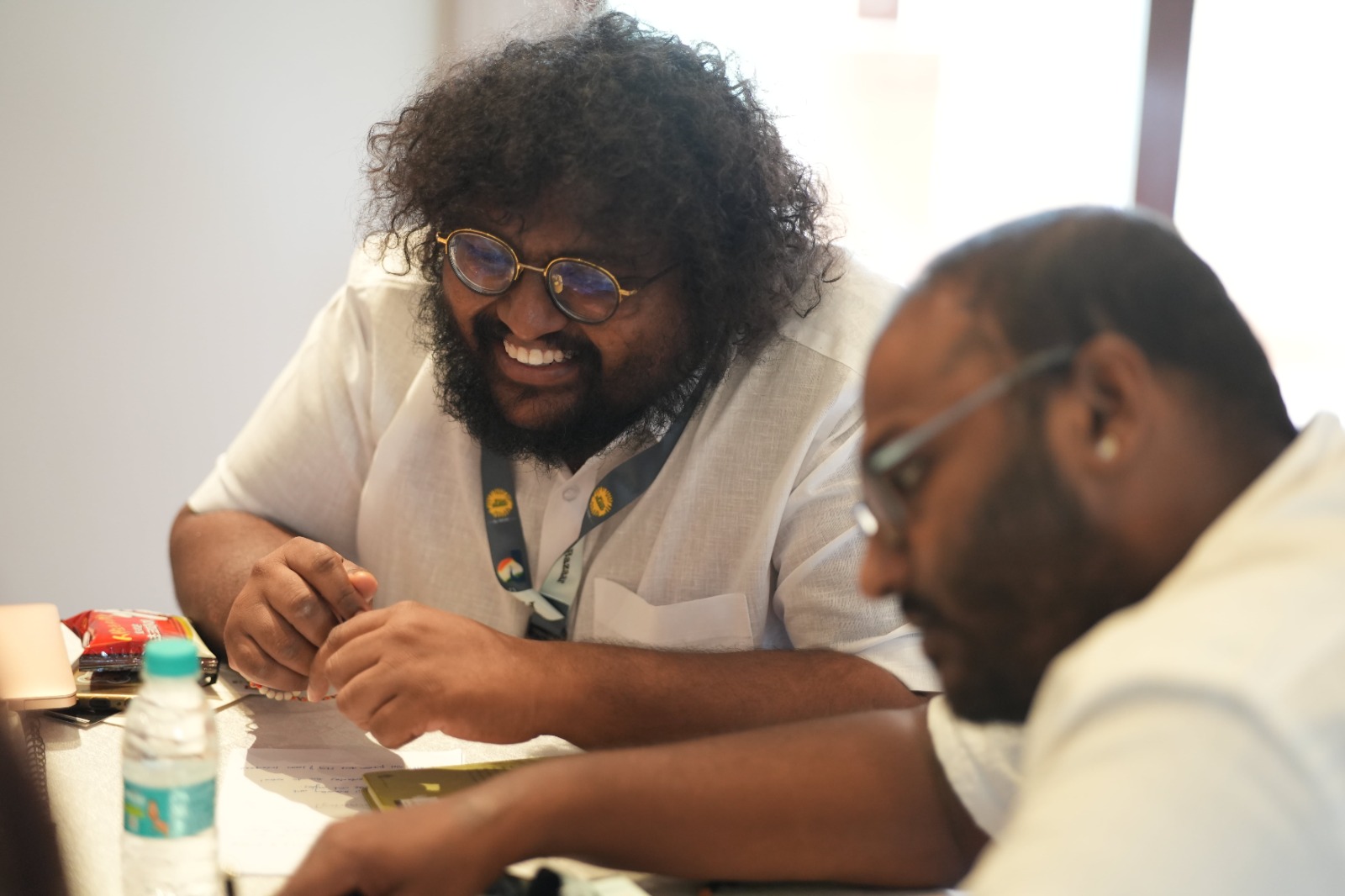
The pioneering Soviet filmmaker, Dziga Vertov, called for the destruction of old cinematic practices often rooted in capitalism in order to create revolutionary cinema. There are several revolutionary and reformist film movements across the world that have propagated the near-complete annihilation of older methods and practices of filmmaking in order to birth a new form of cinema. What do you want to destroy and create in the world of cinema, be it Hollywood, Kollywood, or Malaysian cinema?
Gogu: To be honest, my intention is not to destroy anything or create something entirely new. Rather, I aim to simply tell stories that I consider essential to share, truthfully emanating from the depths of my being, without any form of censorship. My sole objective is to discover the most effective means of translating my crazy thoughts and emotions into a visual medium. In doing so, I believe that the resulting work will naturally emerge as a unique and singular piece of art.
If there’s anything I aspire to create in Malaysian cinema is that I want to create a healthy working environment for my collaborators. I believe cinema can be made without necessarily exploiting the creatives. I want to reform the way movies are made, in a loving and open environment. I have not achieved it yet, but I strive for this.
Kuma: I firmly believe that we can break away from the standard template of masala films. Not all stories need to follow the traditional formula with love tracks, comedians, songs, or fight scenes. This applies not only to Indian cinema but also to Hollywood, where familiar patterns often prevail, hindering the exploration of new and diverse narratives.
In our community, it’s disheartening to witness the prevalent question of “who is the hero?” whenever someone mentions a film. The idea that a film’s worth is solely determined by its main male actor seems absurd to me. Filmmaking is a collaborative art that involves countless talents, both on and off the screen. It’s crucial to celebrate the contributions of every individual involved in bringing a story to life.
As a filmmaker, I feel responsible for challenging these norms and stereotypes. I aspire to create films that defy conventions and embrace fresh perspectives. By focusing on diverse characters and narratives, I hope to contribute to a more inclusive and representative cinematic landscape.
Breaking away from the conventional mould requires both filmmakers and audiences to evolve. As a storyteller, I am committed to being mindful of my choices and avoiding perpetuating harmful stereotypes. I aim to create narratives that celebrate inclusivity and highlight the richness of human experiences, irrespective of gender or background.
At the same time, I believe that audiences play a crucial role in shaping the future of cinema. By being open-minded and receptive to a broader range of films, we can encourage the industry to explore new creative territories. Together, we can foster a cinematic culture that embraces diversity and empowers marginalised voices.
In this journey, I see immense potential to not only enrich the art of filmmaking but also to foster a deeper understanding and empathy among people. By supporting and championing a diverse array of films, we can collectively contribute to a more compassionate and harmonious world, where cinema serves as a catalyst for positive change.
Malaysian Tamil cinema and Malaysian cinema as a whole can be a space where ideas of identity, ethnicity, nationality, religion, and the myriad of socio-economic and political frameworks can be explored, dissected, and even destroyed. What do you think is great about Malaysian Tamil and other language films made by Malaysian filmmakers? What ideas, concepts, and aesthetics have been created in Southeast Asia that you, as a filmmaker, admire and adhere to the most?
Gogu: Apart from the movie Jagat, I don’t see many clear attempts in Malaysian Tamil cinema to explore our identity. Nevertheless, I draw immense inspiration from other Malaysian filmmakers like Tan Chui Mui, Yeo Joon Han, U-Wei, and Dain Said. Their intimate films delve deep into the psyche of society, raising thought-provoking questions for the audience. It’s truly empowering to witness yourself, your community, and your landscape represented in films. It validates our existence, our joy, our dreams, and the personal struggles we go through.
One thing that truly fascinates me in Southeast Asian films is how they beautifully portray our local beliefs and magic. Our region has a rich history filled with rituals, ghosts, and myths, and seeing them come to life on the screen adds a unique touch to the storytelling, specific to this part of the world.
Moreover, there’s a naturally slow pace in our region, which Indonesians would call “santai.” It’s during these unhurried, laid-back moments that we reflect on our lives. However, this inherent rhythm is being disrupted by new fast-paced narratives and modern technology. Some fantastic
filmmakers from our region, like Apitchapong and Lav Diaz, are constantly fighting against this trend. They strive to bring back alignment and harmony in our thoughts through their work.
Kuma: Being part of the Malaysian cinema industry, I consider myself fortunate that we do not have a rigid sense of template or formula dictating our creative expressions. This freedom allows us to explore and express our ideas without constraints, giving rise to a diverse range of narratives and storytelling styles. The clash of cultures in Malaysia provides a fertile ground for rich stories to take root and flourish, making our cinema unique and captivating.
Despite this abundant potential, I acknowledge that we have yet to fully explore the depth of this cultural diversity in cinema. However, we have witnessed the fruitful exploration of these themes in other art forms like theatre and literature. Perhaps, with time, we will see a similar growth and appreciation of these multifaceted cultural narratives on the silver screen.
The Southeast Asian region, including Malaysia, shares a fascinating dynamic when it comes to cultural borrowing. We draw inspiration from both India and China, blending these influences with our own distinct cultural heritage. The result is a tapestry of lifestyles and tastes that are truly diverse and uniquely our own.
As a filmmaker in this vibrant landscape, I am excited by the endless possibilities that our cultural fusion presents. I aim to contribute to the growth of Malaysian cinema by delving into these rich cultural narratives, telling stories that resonate with our audience and connect with the broader global community. By embracing our unique heritage and celebrating the clash of cultures, we have the potential to create captivating films that will leave a lasting impact on the world stage. Through storytelling, we can bridge gaps, promote understanding, and foster unity, not only within our own community but also across borders.
Multiculturalism is inherently part of Malaysian society; how much of this multiculturalism, both its violent contradictions and harmonic symbiosis, do you believe is reflected in Malaysian films? How do you, as a creator, view your work, which is an innate part of the Malaysian film ecosystem, as both honest to the lives of Tamil people and Malaysian nationalism?
Gogu: Discussing the complex reality of multiculturalism in Malaysia through cinema is never a straightforward task. Beyond the challenges posed by censorship and extremists, storytellers must approach this topic with extreme sensitivity. But I think rather than confronting the reality as it is and bringing out the dirty contradictions of the promised ideal, we can use the true power of cinema. Cinema possesses a unique ability to cultivate empathy and understanding among people, making it a valuable tool for fostering better racial harmony in Malaysia.
However, achieving this goal does not require the creation of superficial movies that merely check off diversity checkboxes with characters from each community. Instead, we should shamelessly share our personal stories, enabling audiences to truly appreciate the nuances and poetic elements of each other’s lives.
Unfortunately, many Tamil filmmakers in Malaysia miss the chance to connect with a broader Malaysian audience by exclusively focusing on films with South Indian sensibilities and targeting primarily the Indian audiences. I believe it’s crucial for our Tamil movies in Malaysia to transcend language barriers and connect with people of different races. This is particularly urgent given the current political landscape.
As a filmmaker who speaks and works in a multilingual environment, how does language influence your art?
Gogu: As a visual artist I tend to gravitate more on the ocular content regardless of the language but any artist will agree that mediums are just channels of expressions and on the inside, they all merge to form our psyche. Like most Malaysians, I am multilingual and enjoy literature and works of art in Malay, English and Tamil.
That being said, in recent years I have been discovering the potency of Tamil in various forms. I am determined to get to the depth, understand the beauty of my mother tongue and present my own interpretations for the world to enjoy.
What do you think is the function of film and entertainment in society?
Kuma: Film is a magnificent art form, a captivating melting pot of diverse crafts converging harmoniously. To me, it transcends being mere entertainment; rather, it offers a gateway to immerse ourselves in unexplored worlds, whether fictional or real. As we journey through these worlds, we experience a sense of belonging, if only momentarily.
Beyond its power to entertain, a film holds the potential to become a profound teacher. It can impart valuable lessons in empathy, tolerance, and the inherent strength of human connection. By challenging the status quo, it can also dismantle ingrained conditioning accumulated over a lifetime.
For me, art, including film, should evoke something profound within its audience. Whether it’s evoking emotions, stimulating ideas, or prompting introspective questions, it serves as a catalyst for personal growth and introspection. Thus, a film’s impact extends far beyond the screen, echoing in the hearts and minds of its viewers, leaving an indelible mark on their lives.
Which creative individuals (filmmakers, musicians, editors, writers, etc.) and/or philosophical, film, or political movements have greatly inspired the entirety of your careers in the film industry?
Gogu: There are numerous artists who have inspired me. In the realm of films, Miranda July, Juzo Itami, Spike Lee, Sion Sono, Satyajit Ray, and Wim Wenders have shattered my limited views of cinema and revealed its profound impact on one’s life.
In addition, I deeply admire Tamil great poets and saints like Arunagiri Perumal, Valluvar, Kudhambai Siddhar, and Vallalar. Their works have demonstrated that it’s possible to attain the highest spiritual aspirations while reaching great heights in art.
Above all, the poet Bharathi holds a significant influence on both my life as an artist and as a person.
Kuma:
Film : G.Aravindan, Adhoor Gopalakrishnan, Deepa Mehta, Nandita Solomon, Rithy Panh, Walter Salles, Mira Nair
Music : Catia da Franca, Ali Farka Toure, Gustavo Santaolalla, MIA, Erik Satie, Ravishankar
Writers : Bharathi, Pablo Neruda, Yuval Noah Harari, Toni Morrison, Carlos Ruiz Zafon
All Images Are Provided By Gogularaajan Rajendran
Follow us on Instagram, Facebook or Telegram for more updates and breaking news.


